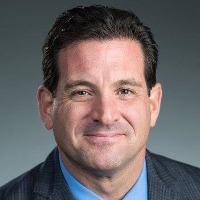Many aspects affect your retirement income strategy, such as staying in the lowest tax bracket possible, reallocating your funds into assets with more or less risk, and determining the best age to begin taking Social Security payments. Throwing a wrench into your careful planning are Required Minimum Distributions, otherwise known as RMDs.
An RMD is the minimum amount you must withdraw from your retirement accounts each year once you reach a certain age. These rules apply to tax-deferred retirement accounts, such as traditional IRAs and 401(k) plans. The premise is simple: after benefiting from years of tax-deferred growth, the IRS finally wants to start receiving tax revenue.
Importance of RMDs in Retirement Planning
RMDs are a crucial consideration in retirement planning for several reasons. Firstly, they can significantly increase your taxable income and, consequently, your tax liability in retirement.
For example, let’s imagine you receive income from your standard brokerage account and Social Security benefits that keep you in the 22% tax bracket. Then, you take your first RMD, which bumps you up to the 24% tax bracket. In this case, removing less from your brokerage account may have been better to prevent the tax bump.
Now, two percent may not seem like a big deal, but it can add up over the years. By determining the minimum amount you need to withdraw each year, you can better gauge the longevity of your retirement funds and make necessary adjustments to your spending or investment strategy.
How RMDs Worked Under Previous Regulations
Before the Secure 2.0 Act changes, the RMD age was 70.5 for quite a long time, and then Secure Act 1.0 pushed the age up to 72. The exact amount you must withdraw each year was and is calculated based on your account balance and life expectancy, as determined by IRS tables. If you failed to withdraw your RMD, a hefty penalty of 50% of the amount that should have been withdrawn was imposed, serving as a strong incentive to comply with the rules.
Secure 2.0 has changed the RMD landscape.
With the advent of Secure 2.0, there are several new rules that you need to carefully examine and consider when creating your retirement plan.
Higher RMD Ages
The onset of your Required Minimum Distributions (RMDs) is determined by your birth date. If you were born between July 1, 1949, and December 31, 1950, you would start your RMDs at the age of 72. For those born between January 1, 1951, and December 31, 1959, the age increases to 73, and for anyone born after January 1, 1960, it is set at 75. These increased age limits let your funds grow longer without being burdened by taxes or RMDs.
It also gives your retirement account time to recover from a down market. For example, if you have to take your RMD at 72 and your account was hit hard by a downmarket, it will be harder to recover from the double whammy of taking your RMD and paying taxes from a reduced account. A year to recover could be incredibly beneficial to your overall retirement fitness.
However, you also have to factor in that by waiting to pull from your IRA or 401(K), your RMD will likely be larger, meaning you may offset any gains you made due to a higher tax bill.
Reduced Penalties
Before the implementation of the Secure 2.0 Act, the penalty for missing an RMD was a hefty 50% of the amount that should have been withdrawn, creating a significant financial burden for retirees who failed to take their RMDs, whether due to oversight, confusion, or other reasons.
However, the IRS now will take a lighter hand to retirees who fail to take their RMD – the penalty has significantly dropped from 50% to 25%. On top of that, the penalty can potentially be reduced to only 10% if the error is corrected in a timely manner.
Elimination of RMDs from Roth Accounts in Employer Retirement Plans
Retirees love the Roth. Tax-free growth turns into tax-free retirement income, providing a clear picture of your overall financial situation. But before Secure 2.0, workplace Roth accounts still required RMDs. However, after December 31, 2023, this will no longer be the case.
This means that the Roth component of your workplace 401(K) can continue to grow as long as you like, as long as you aren’t turning 73 in 2023. If you do turn 73 in 2023, you’ll have to calculate your RMD from your Roth 401(K), and then next year, if you like, you can let those funds continue to grow and not take an RMD.
This rule is also great as an estate planning tool. You can now let your Roth funds grow forever, and your beneficiary can receive that Roth account and remove funds from it. Beneficiaries have a ten-year window to remove Roth funds from an inherited account.
In Light of These Changes
Now that new regulations are in place and more will come into force later, now is an excellent time to review and update your retirement plan.
Reevaluate Your Withdrawal Strategy
If you’re nearing retirement, now is an excellent time to sit down with a financial advisor and review your withdrawal strategy. For example, your advisor may recommend changing the order of withdrawals from your various accounts.
Review your Roth Strategy
Now that RMDs no longer apply to workplace Roth accounts, you may want to start contributing your Roth. If you’re already doing so, consider bumping up your contribution amount. It might also be worth considering whether a Roth conversion makes sense for your situation. This could potentially help to lower future tax liabilities, given that withdrawals from Roth accounts are generally tax-free.
Update your Estate Plan
The changes to the RMD age could also have implications for estate planning. For example, suppose you were planning to leave your retirement accounts to your heirs. In that case, the changes might allow you to leave more of your retirement assets untouched for a more extended period, leading to a more considerable legacy.
In Conclusion
Secure 2.0’s sweeping changes present both new opportunities and challenges to retirement planning. While these new rules allow you to delay tax liabilities and keep more of your hard-earned savings for longer, they also necessitate a careful review and potential adjustments in areas such as your overall tax situation, retirement income strategy, Roth analyses, and estate planning.
We can help you make the most of your retirement plan and adjust it as necessary to align with Secure 2.0’s new rules and regulations. Just click the button below!











